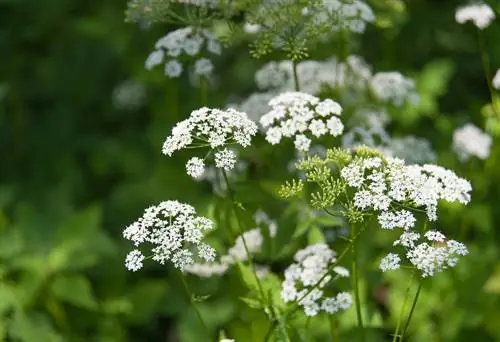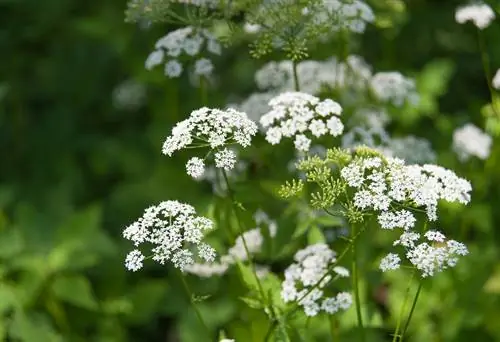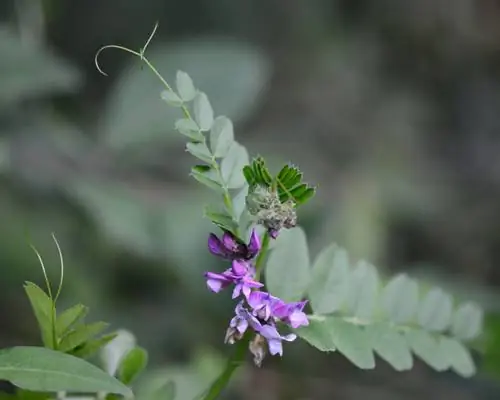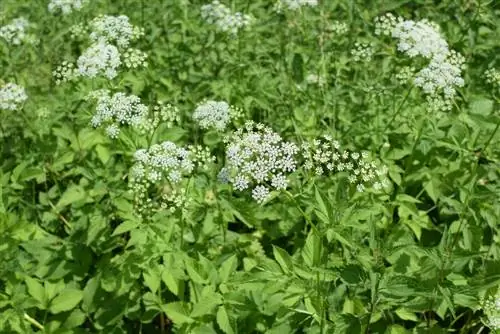- Author admin [email protected].
- Public 2023-12-16 16:46.
- Last modified 2025-01-23 11:20.
Herbs like dill and parsley are close relatives of groundweed. And yet the greedweed has numerous peculiarities. Below you will find an overview of its characteristics, its occurrence and what makes it so special!

What are the characteristics and properties of greedweed?
Gedweed (Aegopodium podagraria) is an umbelliferous plant that occurs in deciduous forests, bushes, gardens and parks. It has green, three-part, serrated leaves, white umbel flowers and is edible and medicinal, especially for gout and rheumatism.
Overview of the peculiarities of goosegrass
- Family and genus: Umbelliferae, Aegopodium
- Origin: Europe, Asia
- Occurrence: deciduous forests, bushes, gardens, parks, roadsides
- Location: sunny
- Soil: undemanding
- Growth: upright, herbaceous
- Growth height: 70 to 100 cm
- Leaves: tripartite, jagged, pointed, green
- Flowering period: May to September
- Flower structure: umbel flowers
- Flower color: white
- Fruits: inconspicuous
- Special features: edible, medicinal herb
A much-named herb
Gersch is also known by other names depending on the region. Maybe you know it better under the name Goatfoot or Goutweed? Trefoil, wild holler, rhinoceros and horny goat weed are also common names for ground goose. Botanically it is called Aegopodium podagraria.
This is how you can easily recognize Giersch
The upright growth appears herbaceous and slightly bushy. It reaches a height of 1 m. Both basal leaves and stem leaves are formed. All leaves are tripartite, colored green to blue-green, sharply toothed at the edge and elongated-ovate.
You can also easily distinguish the goutweed from other plants by its stems. The stems of this medicinal herb are triangular and hollow inside. The fruits are also distinctive. They look like caraway seeds: small, elongated, thin, smooth and they have a pungent taste.
An edible medicinal plant
Most gardeners only know groundweed as an annoying weed. Admittedly, it grows incredibly fast and is therefore almost unpredictable. But this herb is also a medicinal plant that you can even eat!
The gourd tastes aromatic, spicy, s alty and its taste is somewhat reminiscent of a mixture of parsley and carrot. Among other things, it has antibacterial, deacidifying, diuretic, strengthening and anti-inflammatory effects. It is soothing for gout, rheumatism, cuts, burns, colds and gastrointestinal complaints.
Tip
Based on its flowers alone, you can easily confuse it with poisonous members of the umbelliferous family! Therefore, always take a closer look at the leaves and stems before collecting the plant!






